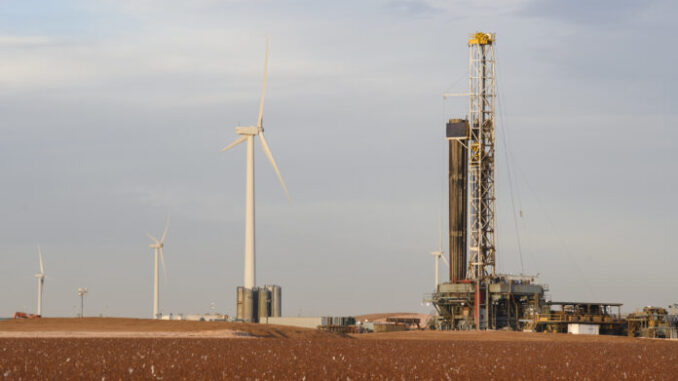
ENB Pub Note: This is a major topic, and the land reclamation and disposal of wind and solar components need to be addressed at the front end of the projects. Farmland and landowners are getting stuck at the end of the projects. Sustainable energy has to include reclamation and fiscal responsibility.
The burgeoning waste from wind farms, solar panels and electric vehicles is growing more challenging by the month and State Rep. Brooks Landgraf and Waco economist Ray Perryman say it’s time to deal with it.
There currently seems to be little else that can be done with the huge old propeller blades and worn-out turbine components from wind farms except to fill up the landfills with them while solar panels contain the environmentally harmful elements of lead, cadmium, glass, aluminum and silicon and EVs present the dilemma of what to do with their huge worn-out batteries.
“It’s noteworthy that so many environmental activists fail to account for the waste streams associated with wind and solar power generation, overlooking the holistic environmental impact of renewable energy technologies,” said Landgraf, an Odessa Republican who chairs the Texas House Environmental Regulation Committee in Austin. “They fail to realize that embracing renewable energy also necessitates confronting the accompanying waste challenges head-on. However, far from a hindrance, these challenges can offer fertile ground for innovation.
“The oil and gas industry’s adaptability serves as evidence of this potential as it has effectively converted waste into profitable income streams to fulfill market needs.”
Just as the oil and gas sector has capitalized on waste, Landgraf said, a similar evolution should he expected with renewables.
“In fact, pioneering enterprises are already emerging in our region dedicated to recycling and repurposing components from renewable infrastructure,” he said. “This trend signals a significant shift towards sustainable solutions, mirroring the transformation seen in our traditional energy sectors.
“By recognizing the economic opportunities inherent to waste management within our energy sector, we can cultivate environmental stewardship alongside economic growth and ultimately continue to embrace an all-of-the-above energy approach.”
Perryman said the only way to make rational decisions related to future energy patterns given climate goals is to fully consider the most complete spectrum of issues possible.
“For an electric car, for example, it is improper to only look at tailpipe emissions,” he said. “It is also relevant to consider the production process for the car and its batteries including related mining, the generation required for charging, the particulate pollution from tires because EVs are heavier and the climate problems of disposing of them when their useful life has expired.”
Perryman said the same thorough process should apply when considering wind power.
“The blades have to go somewhere,” he said. “They won’t break down for centuries and there are issues related to the effects of operations on certain wildlife. Solar is also somewhat problematic given the toxic materials released as panels which have exceeded their useful lives are disposed of and degrade.
“These environmental challenges associated with renewable sources must be dealt with just as the excess leakage of methane in the oil and gas sector and the greater necessity for carbon capture are relevant.
“Clearly, renewable sources have an important role to play in simultaneously meeting future energy needs and dealing with climate change. The same is true of oil and gas. Future demands assure that an all-of-the-above energy complex is essential to meet rising global demand.”
In making allocation and other policy decisions, Perryman said, it is not helpful to ignore environmental issues stemming from renewables ranging from lithium mining to future disposal.
“Optimal solutions can only be found when we attempt to look at the problems and solutions from beginning to end for all fuel types,” he said. “A lot has to be done to meet global energy demands and address legitimate climate concerns.
“We need a complete picture to accomplish these goals properly.”



